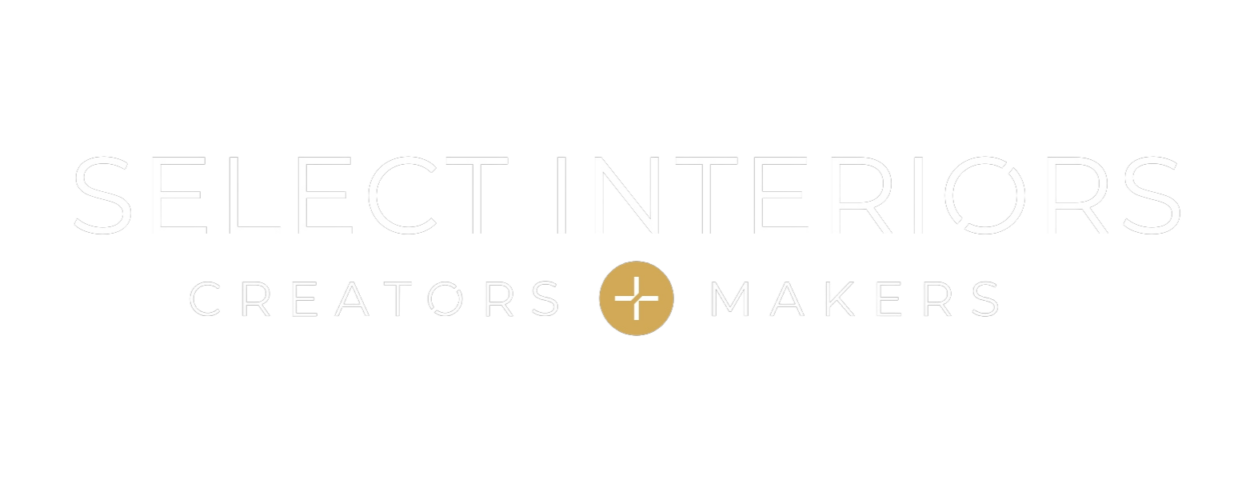Optimising your office fit-out: Essential technology considerations
- Carl Brown
- Design Trends, General, Office fit out, Office Fitting
Designing or redesigning an office space is an exciting venture that combines creativity, strategic planning, and a keen understanding of the needs of the modern workforce. As businesses continue to evolve in the digital age, integrating the right technology becomes a pivotal part of this process. The technologies you choose will significantly impact productivity, collaboration, and overall employee satisfaction. From robust network solutions to innovative office automation systems, each element plays a crucial role in creating an efficient and dynamic workplace. Here’s a comprehensive guide on the technology considerations you should factor in when planning your office fit-out.
Network and connectivity
In today’s digital-first world, a reliable network infrastructure is not just a convenience but a necessity. A fast, secure, and stable Internet connection underpins almost every aspect of modern business operations, from daily communication to complex data processing and cloud-based collaborations. Ensuring that your office is equipped with high-speed internet and robust Wi-Fi coverage is the first step in fostering a productive environment.
High-speed internet
High-speed internet is the lifeline of any modern office. It supports various online activities such as video conferencing, cloud-based applications, and remote work. When planning your office fit-out, it’s vital to consider an internet service that offers not only high speed but also reliability and scalability to accommodate future growth.
Wi-Fi coverage
Wi-Fi is a fundamental component of office fit-out connectivity, enabling mobility and flexibility within the workspace. Investing in enterprise-grade Wi-Fi solutions ensures strong coverage throughout the office, eliminating dead zones and maintaining seamless connectivity. This is particularly important in open office plans where mobility is encouraged, and employees frequently move between desks, meeting rooms, and collaborative spaces.
Network security
With the increasing reliance on digital platforms, securing your office network is more critical than ever. Implementing strong network security measures, such as firewalls, VPNs, and secure access controls, helps protect sensitive company data and maintains privacy. Ensuring that your IT infrastructure is equipped to handle potential security threats will not only protect your assets but also build trust with clients and partners.
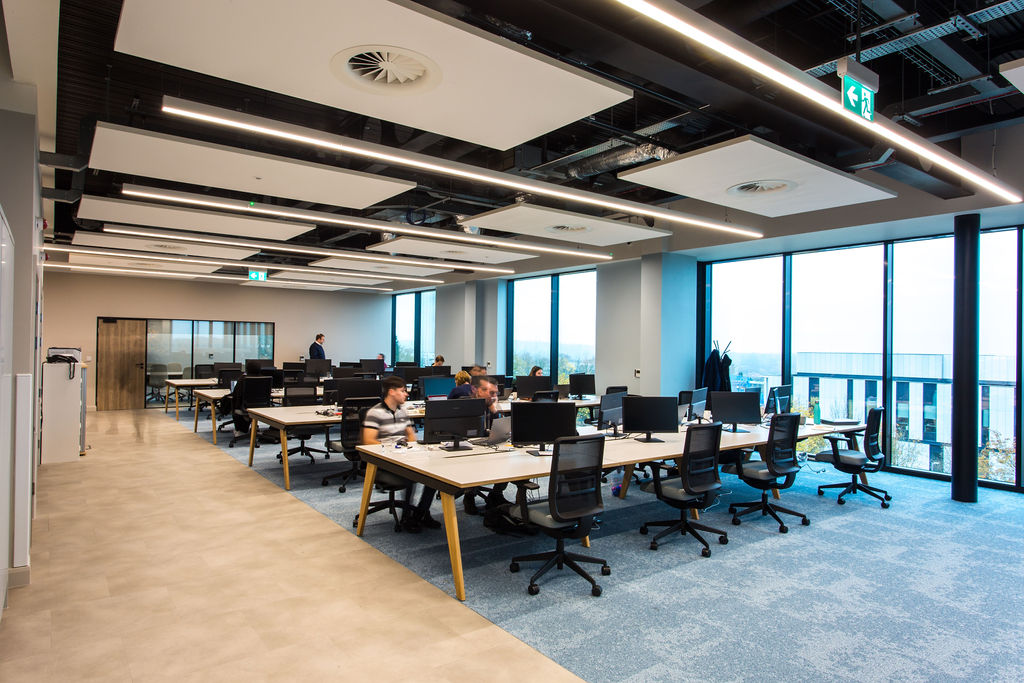
Communication and collaboration tools
Effective communication is the cornerstone of any successful business. With the rise of remote work and global teams, having the right communication and collaboration tools is essential for maintaining productivity and engagement. From unified communication systems to video conferencing equipment, the technologies you integrate into your office fit-out can streamline processes and foster a more collaborative environment.
Unified communication systems
Unified communication systems, such as Microsoft Teams, Slack, or Zoom, integrate voice, video, messaging, and email into one cohesive platform. This integration simplifies communication by allowing employees to use a single tool for various forms of communication, making interactions more efficient and centralised. When selecting a unified communication system, consider features like ease of use, scalability, and integration with other business tools.
Video conferencing equipment
Video conferencing has become a staple of modern business operations, especially with the shift towards remote and hybrid work models. Equipping your meeting rooms with high-quality video conferencing systems, including cameras, microphones, and large displays, facilitates seamless virtual meetings and collaboration with remote teams. Investing in reliable video conferencing equipment enhances the quality of virtual interactions and ensures that your teams can communicate effectively, regardless of their location.
Interactive whiteboards
Digital whiteboards, such as the Microsoft Surface Hub or Google Jamboard, have revolutionised brainstorming and presentation sessions. These interactive tools allow for dynamic presentations and collaborative brainstorming, making meetings more engaging and productive. Interactive whiteboards can also integrate with other digital tools and platforms, providing a versatile solution for various collaborative needs.
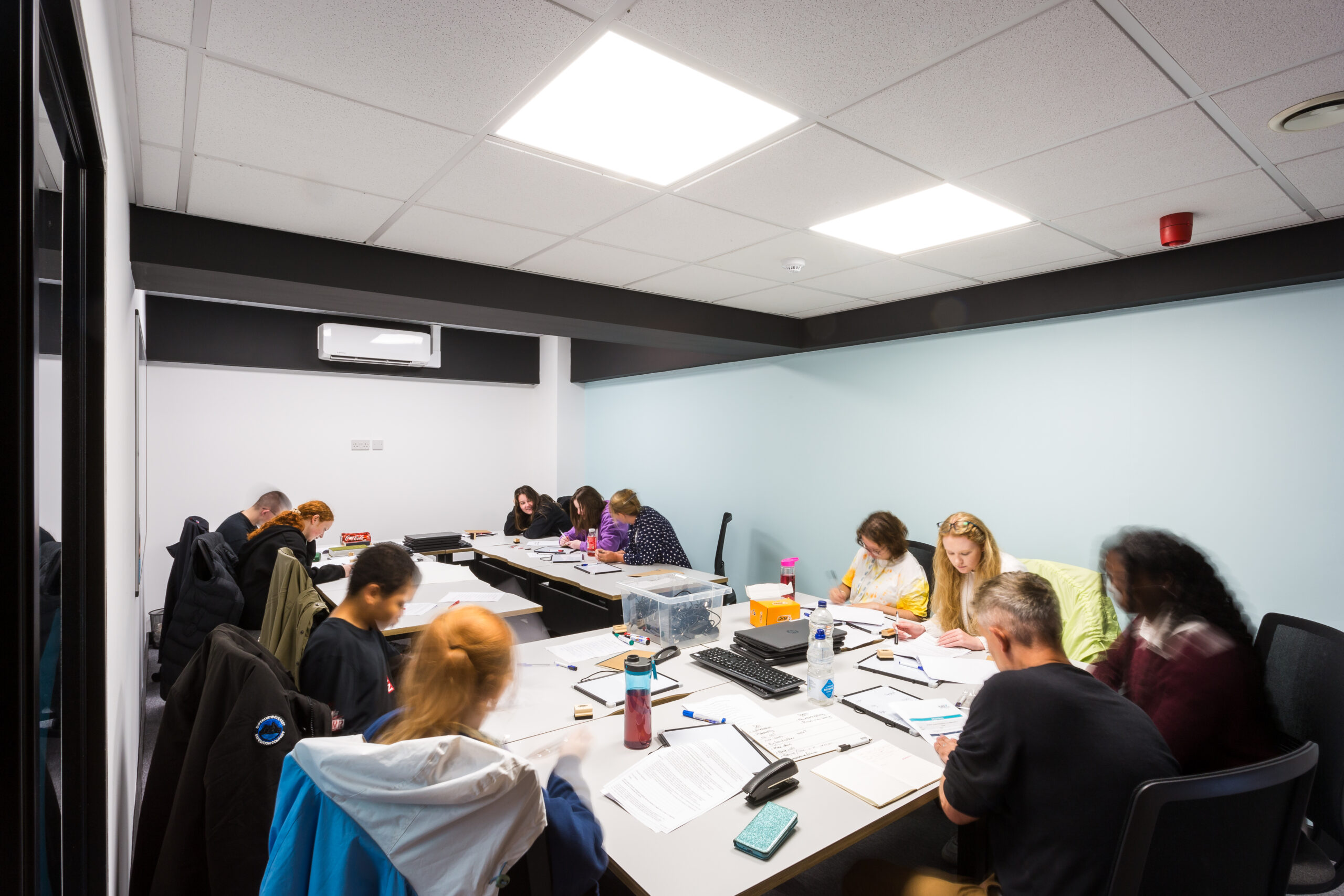
Office automation and smart systems
Office automation and smart systems are transforming traditional workspaces into efficient, responsive environments that enhance both productivity and employee well-being. From smart lighting to automated climate control, these technologies optimise the office fit-out to create a more comfortable and energy-efficient space.
Smart lighting
Smart lighting systems are designed to adjust brightness and color temperature based on natural light, time of day, or occupancy. This not only enhances comfort but also contributes to energy efficiency by reducing unnecessary energy consumption. Implementing smart lighting can create a more pleasant work environment, improve focus, and reduce eye strain.
Climate control
A comfortable office environment is essential for employee productivity and satisfaction. Smart thermostats and HVAC systems automatically regulate temperature and ventilation based on occupancy and external conditions, ensuring a comfortable environment while reducing energy costs. By optimising climate control, businesses can create a healthier, more productive workspace.
Occupancy sensors
Occupancy sensors are a valuable addition to any office fit-out, providing data on how spaces are used and allowing for better management of resources. These sensors can automatically adjust lighting and climate control based on room occupancy, optimising energy use and ensuring that spaces are used efficiently. Additionally, occupancy sensors can be integrated with meeting room booking systems to enhance space management and reduce scheduling conflicts.
Furniture and ergonomic solutions
Investing in ergonomic furniture and accessories is not just about aesthetics; it’s about creating a healthy and productive work environment. From adjustable sit-stand desks to ergonomic chairs and wireless charging stations, these elements contribute to employee well-being and overall office efficiency.
Sit-stand desks
Sit-stand desks have become increasingly popular as businesses recognise the health benefits of promoting movement throughout the workday. These adjustable desks allow employees to switch between sitting and standing, encouraging better posture and reducing the risk of musculoskeletal issues. Incorporating sit-stand desks into your office design can improve employee comfort and productivity.
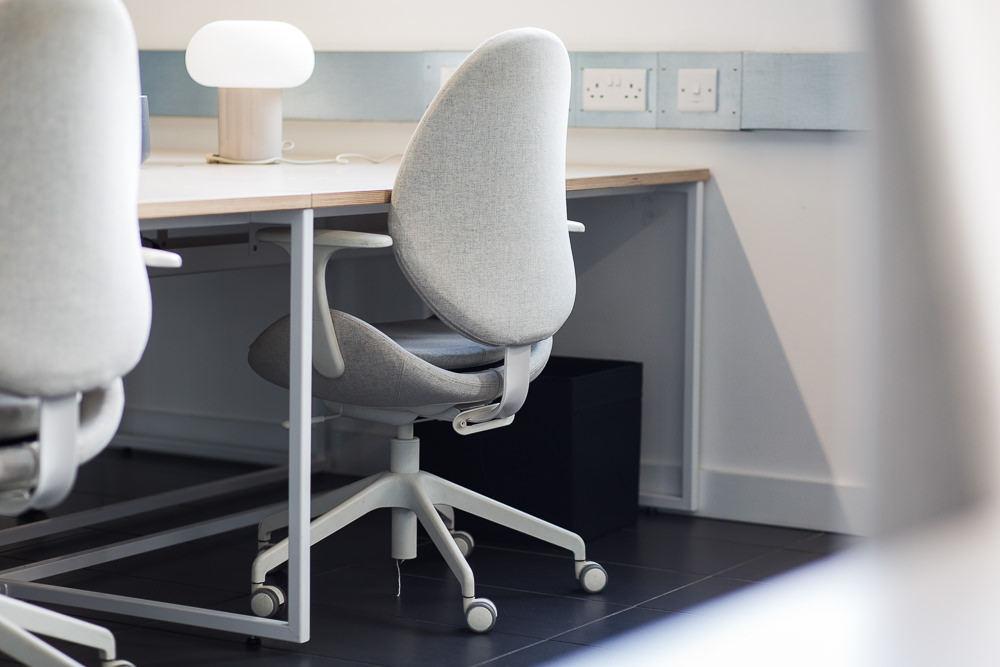
Ergonomic chairs and accessories
Ergonomic chairs, keyboard trays, and monitor arms are essential for creating a comfortable and supportive work environment. These adjustable accessories help reduce the risk of repetitive strain injuries and promote better posture, contributing to overall employee well-being. Investing in ergonomic solutions demonstrates a commitment to employee health and can reduce absenteeism due to work-related injuries.
Wireless charging stations
In a world where mobile devices are integral to daily operations, providing wireless charging stations in desks and common areas can support a clutter-free environment and ensure that devices are always charged and ready to use. Wireless charging solutions enhance convenience and reduce the need for cumbersome cords and chargers.
Digital signage and displays
Digital signage and displays play a crucial role in modern office environments, serving as tools for communication, navigation, and engagement. From information displays to interactive kiosks, these technologies can improve the overall office experience for both employees and visitors.
Information displays
Digital signage can be used to display company announcements, events, and important updates in common areas. These information displays keep employees informed and engaged, fostering a sense of community and alignment with company goals. Digital signage is also a versatile tool that can be easily updated to reflect current priorities and initiatives.
Wayfinding displays
For a large office fit-out, digital wayfinding displays help visitors and employees navigate the space more easily. These displays provide clear directions and information, reducing confusion and improving the overall experience. Wayfinding solutions can be particularly valuable in multi-floor offices or complex buildings with multiple departments and meeting rooms.
Interactive displays
Interactive displays, such as kiosks or touchscreens, can be used in lobbies or common areas for employee engagement, visitor check-ins, or quick access to information. These displays provide a dynamic, interactive experience that enhances engagement and streamlines processes.
Meeting room management systems
Efficient meeting room management is essential for maximising space utilisation and minimising scheduling conflicts. Digital room booking systems and voice-activated digital assistants can simplify the process of reserving meeting spaces and managing office resources.
Room booking software
Digital room booking systems integrate with calendars and display availability at the entrance of each meeting room, preventing scheduling conflicts and optimising room usage. These systems streamline the booking process and provide real-time information on room availability, making it easier for employees to find and reserve spaces for meetings.
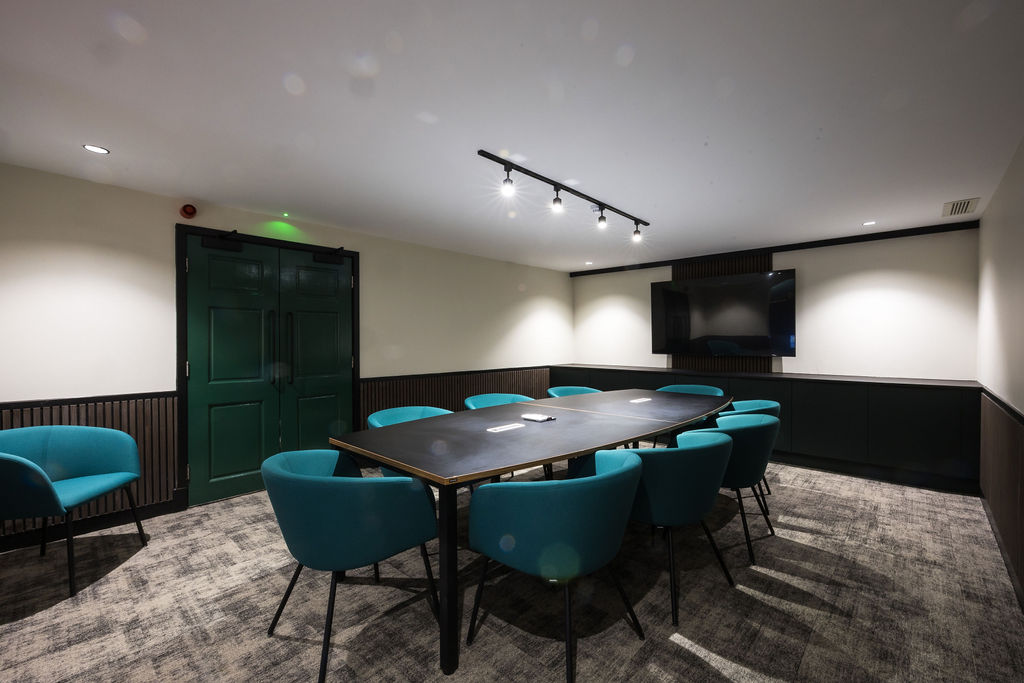
Digital assistants
Voice-activated digital assistants, such as Alexa for Business, can be used to book meeting rooms, control lighting, or initiate video calls. These assistants provide a hands-free, intuitive way to manage office resources and enhance the overall efficiency of the workspace.
Security and access control
Security is a top priority for any business, and modern technology offers a range of solutions to protect your office and data. From smart access control systems to surveillance cameras and visitor management systems, these technologies provide comprehensive security coverage.
Smart access control systems
Upgrading to smart access control systems that use keycards, mobile apps, or biometric recognition provides secure and convenient access to the office. These systems enhance security by limiting access to authorised personnel and can be easily managed and monitored.
Surveillance cameras
High-definition security cameras installed in strategic locations help monitor the premises and ensure safety. Surveillance systems provide a deterrent to potential intruders and can be integrated with other security technologies for a comprehensive security solution.
Visitor management systems
Digital visitor management systems streamline check-in processes, maintain visitor logs, and enhance security. These systems provide a professional first impression for visitors and help ensure that only authorised individuals have access to the office.
=====
Optimising your office fit-out with the right technology is more than just an investment in infrastructure—it’s an investment in the future of your business. By carefully selecting and integrating technologies such as high-speed internet, secure network solutions, and advanced communication tools, you create a foundation that supports productivity and enhances collaboration.
Ultimately, the technology choices you make during your office fit-out should align with your company’s culture, goals, and future growth plans. By prioritising solutions that enhance efficiency, foster a positive work environment, and offer the flexibility to adapt to new challenges, you can create an office space that not only meets the needs of today but is also prepared for the demands of tomorrow.
so drop us a line today.

